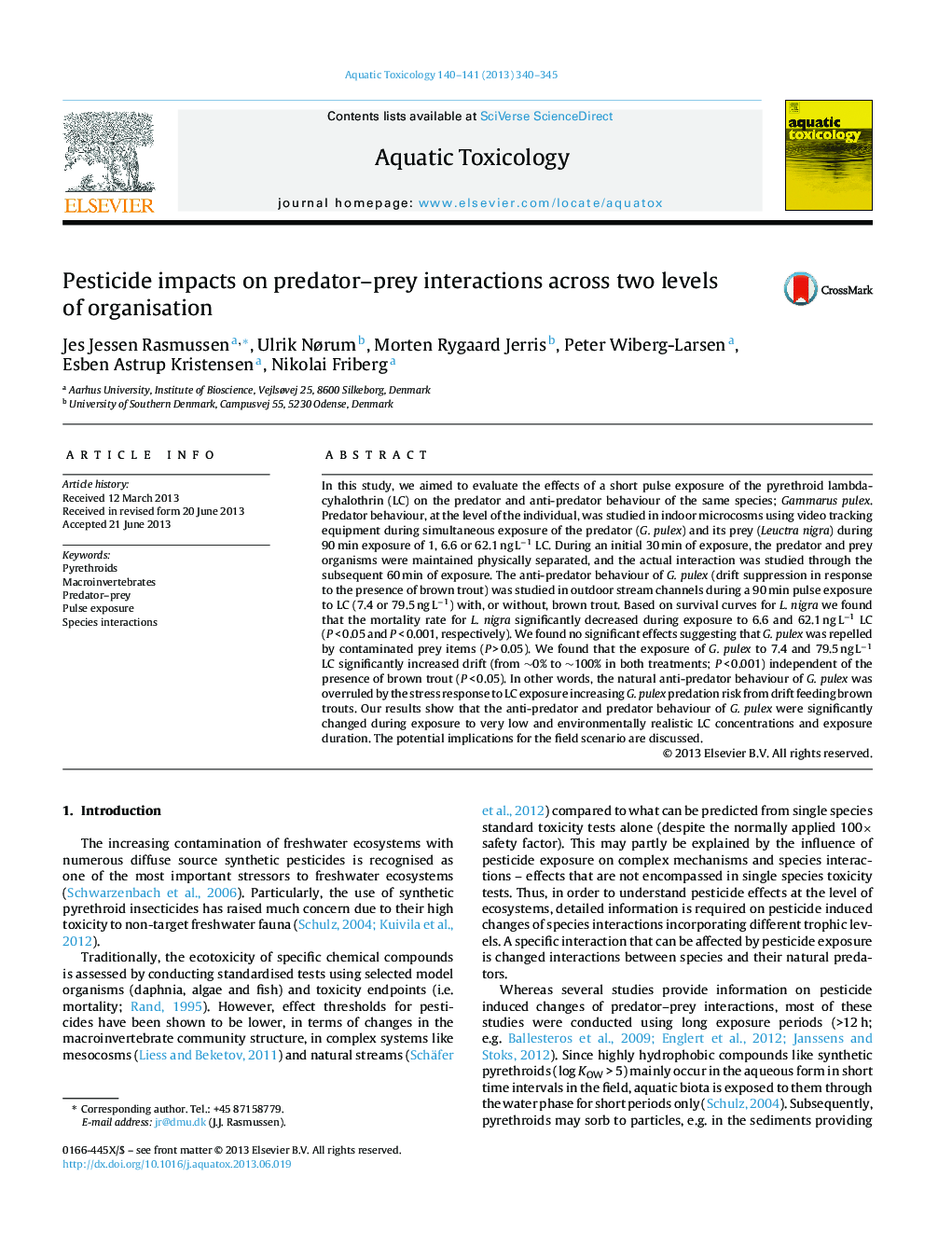| کد مقاله | کد نشریه | سال انتشار | مقاله انگلیسی | نسخه تمام متن |
|---|---|---|---|---|
| 6382550 | 1625962 | 2013 | 6 صفحه PDF | دانلود رایگان |
- Lambda-cyhalothrin overrules anti-predator behaviour of Gammarus pulex during exposure.
- Lambda-cyhalothrin overrules predator behaviour of G. pulex during exposure.
- Sublethal lambda-cyhalothrin concentrations may have cascading effects.
In this study, we aimed to evaluate the effects of a short pulse exposure of the pyrethroid lambda-cyhalothrin (LC) on the predator and anti-predator behaviour of the same species; Gammarus pulex. Predator behaviour, at the level of the individual, was studied in indoor microcosms using video tracking equipment during simultaneous exposure of the predator (G. pulex) and its prey (Leuctra nigra) during 90 min exposure of 1, 6.6 or 62.1 ng Lâ1 LC. During an initial 30 min of exposure, the predator and prey organisms were maintained physically separated, and the actual interaction was studied through the subsequent 60 min of exposure. The anti-predator behaviour of G. pulex (drift suppression in response to the presence of brown trout) was studied in outdoor stream channels during a 90 min pulse exposure to LC (7.4 or 79.5 ng Lâ1) with, or without, brown trout. Based on survival curves for L. nigra we found that the mortality rate for L. nigra significantly decreased during exposure to 6.6 and 62.1 ng Lâ1 LC (P < 0.05 and P < 0.001, respectively). We found no significant effects suggesting that G. pulex was repelled by contaminated prey items (P > 0.05). We found that the exposure of G. pulex to 7.4 and 79.5 ng Lâ1 LC significantly increased drift (from â¼0% to â¼100% in both treatments; P < 0.001) independent of the presence of brown trout (P < 0.05). In other words, the natural anti-predator behaviour of G. pulex was overruled by the stress response to LC exposure increasing G. pulex predation risk from drift feeding brown trouts. Our results show that the anti-predator and predator behaviour of G. pulex were significantly changed during exposure to very low and environmentally realistic LC concentrations and exposure duration. The potential implications for the field scenario are discussed.
Journal: Aquatic Toxicology - Volumes 140â141, 15 September 2013, Pages 340-345
